Whenever you buy a used car, the number of questions you could potentially ask is staggering. In most cases, you will only have a limited amount of time to ask those questions. So, what should we keep in mind when searching, checking, and testing a car? Below are some tips you can use to make this process easier.
Before Buying A Used Car
The first step is to have your prep-work done. Ensuring you are ready before you speak to a salesperson, you come in armed with the knowledge that will help you in any negotiation. These apply to both dealers and private sellers.
Tips1: Choose the right car you need
If you do not know what kind of car you need, you will purchase something that is not suited for you. Having a minivan as a single person isn’t going to be helpful. List out a series of features and sort them by the level of importance. It would be best if you were willing to sacrifice some of these features in some cases.
Tips2: Set your budget
A budget is an allotment that you are willing to set aside to purchase a car. It is not limited to the purchase price of the vehicle. You need to account for the initial up-front investment required for changing the title and registration. Depending on your state, there will be different rules on the amount of tax you have to pay on the car.
If you plan on getting a loan, you should expect to put down 20 percent. If you are buying from a dealership, this will be especially important. It would be best if you also quoted an insurance policy on the vehicle. By acquiring the VIN, you will be able to run this quote to include it in your budget.
Tips3: The best time to buy a used car
While it may seem like an obvious statement, the best time to buy a used car is before you need it. If you purchase it when you need it, the worst dealers will tend to see that as a way to take advantage of your situation. However, you can turn the tables on them depending on the timing.
If your ultimate goal is to get the best deal, try and plan your car purchases for the end of the calendar year. Given that this is the time for them to prepare for the new stock, you get the best discounts. If that doesn’t work, dealers are more motivated to make deals if you purchase around the second half of the month.
Tips4: Keep on top of used car market prices
Keep an eye on websites like Autotrader, Kelly Blue Book (KBB), and Nadaguides.com to keep an eye on market fluctuations. When buying, awareness of the used car prices will allow you to talk someone down, especially if the market prices are lower. Even if the market prices are higher, that knowledge gives you comfort, knowing you are getting a good deal, or there is something that might be wrong.
Tips5: Where to look for a pre-owned vehicle
You have many different options in looking for pre-owned vehicles. First, you can choose online marketplaces through Facebook or Craigslist. You can also look through your local newspaper in the classified sections, as there are still a small number of people who use them. Finally, you can go to a car dealership.
Tips6: Dealerships vs. Private Sellers
If you decide upon a used car, should you pick one at a dealership or a private seller? There are advantages and disadvantages to either option.
With private sellers, there are no standards for quality. Anything you buy will be as is, and the seller may be concealing information in the worst-case scenarios. However, local reputation will motivate them not to sell broken items. Also, they are more receptive to negotiation, given their goal is not to make a profit.
Dealership Reputation
Dealerships also have a reputation to uphold. If they are known for selling too many lemons, nobody will want to come to the stand. Speak with a trustworthy source who has made a purchase here. If that doesn’t work, go to Google reviews to see about the average reviews. Pay particular attention to their one- and two-star reviews.
Dealership Policies
Each dealership has different policies, and those policies can vary between different states. Check out your local Department of Motor Vehicles (DMV) website for state requirements. Most of the time, dealerships have a great deal of freedom.
Check the windows for a “buyers guide” required to come with most vehicles based on the Federal Trade Commission’s (FTC) rules. You probably have seen them before, as they often check the “sold as is” box. In some cases, you can get certified pre-owned vehicles (CPOs), which go through a multi-point inspection and have more features.
Tips7: Hire a technician (Or Go with a Technical Friend of Yours)
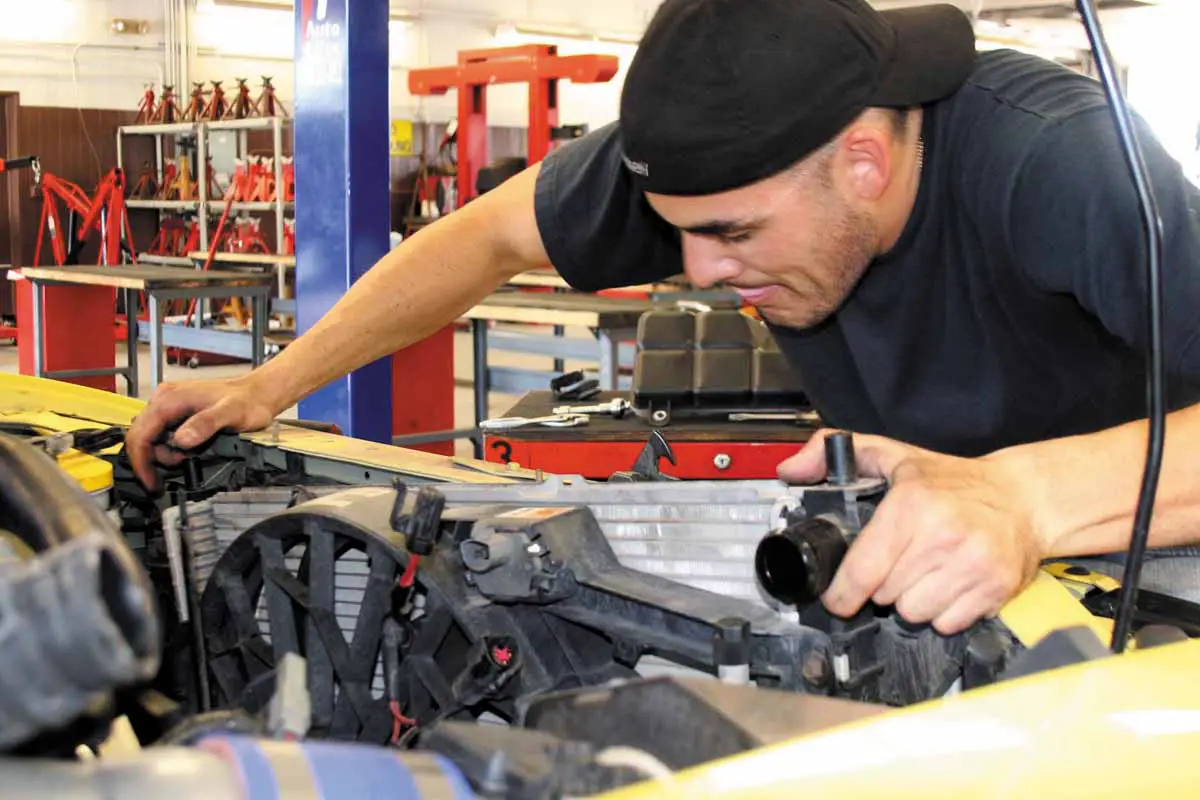
If you do not know too much about cars, bring someone with you who has experience in the area. It is especially important before the purchase, as almost all sales are final in the used-car world. They will be familiar with certain aspects of the car to look for, which is especially important during the test phase.
Buying A Used Car
Once we have the prep work out of the way, we can take a closer look at other important factors.
Tips8: Inspect the car carefully in daylight, and good weather
A full inspection of the car will be necessary to ensure you know what you are buying. Even if you see this person as a close, personal friend, they may have missed a spot on the car that you can point out. In the best-case scenario, it means you would have dodged a bullet or informed your friend of a problem that would prevent the sale of the car. Do so in the day with no distractions so that you may focus on the vehicle.
Tips9: Check the vehicle history report
By getting the Vehicle Identification Number, you will run a history report on your end. You can also request that the dealership does it for you, as this is not uncommon. Accidents and repairs may reveal that the car has diminished value, which may be a deal-breaker or work to your advantage.
Tips10: Check the vehicle’s reliability on the internet
Websites like KBB, Nada Guides, and AutoTrader all have sections on them where people may review the car. If the vehicle has a history of negative experiences, you may wish to reconsider a purchase. Either that, or you can use that factor to talk down the price.
Check the Used Car Exterior
Once you have narrowed down the vehicle’s history and reliability, you can take a detailed inspection. Be sure to do this during good weather and start with the exterior first.
Tips11: Body condition check
Check for dents, dings, and scratches along the body of the vehicle. Significant dings may lead you to ask if this vehicle has been through a claim, as claims history can reduce the value of a car.
Tips12: Rust: A magnet to check for hidden rust repairs
When you run a regular fridge magnet along the body of a car, it will stick to most portions. Those that the magnet doesn’t hold to indicate a rust patch job. However, there are some limitations to the test, especially if you live in humid locations. You may supplement this by checking for uneven pieces of the car’s body, which are signs of a patch job.
Tips13: Open and close each door, the hood, and the trunk
In this case, you will be checking for the structural integrity and function of each of the doors. If something fails during this test, you will either use it as a price reduction point, request a repair before purchase, or decline the purchase entirely. That decision will be up to you.
Tips14: Glass check
Check for cracks and damage to the glass, especially near the edges. Failure to meet these requirements indicates a lack of care from the seller, as this is the bare minimum one needs to do. If they are upfront with the glass damage, it is not as much of an issue.
Tips15: Windows
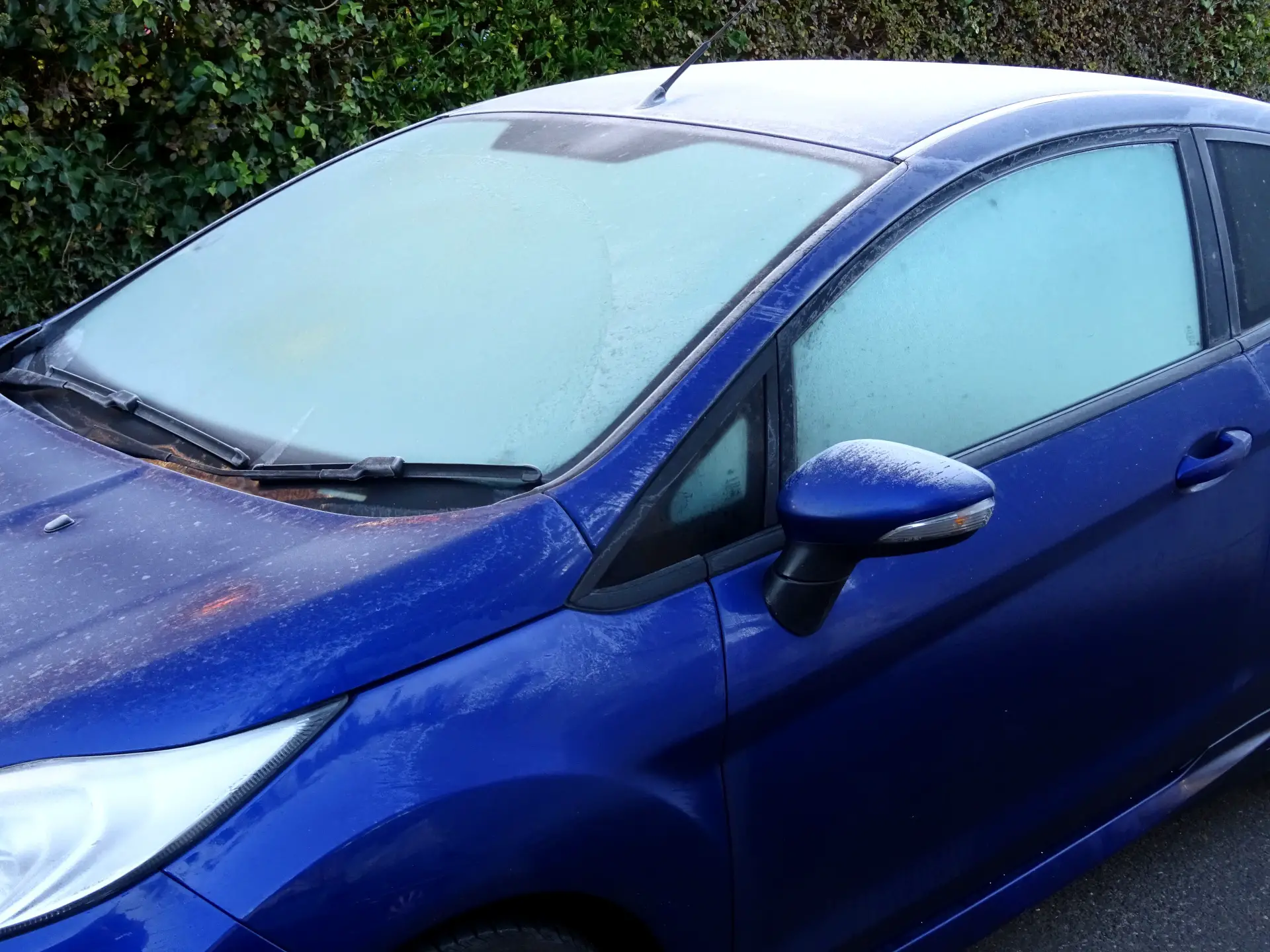
There are also signs if the car glass has been correctly installed. Listen for any “whooshing” sound when driving fast. There may also be a water leak if you wash the car along the edges of the windows. Also, listen for rattling noises as you are driving the vehicle.
Tips16: Suspension check
When checking the suspension, be sure to perform the bounce test. If the car rocks a few extra times after bouncing in the front and back of the vehicle, the suspension is weak. You may also feel it drift while you are turning the car, or it just may be a rough ride.
Tips17: Lights and lenses check
Check to see if all of the lights are functioning. These will include turn signals, headlights, and fog lights. It is not enough for these to function. You will also want to check to see any damages. If they are clean, that means your seller has attention to detail.
Tips18: Tires check
Check to see the condition of your tires. The easiest method is the penny test. Grab a penny and face it so that Lincoln’s head is going into the tread. If the tread entirely conceals Lincoln’s hair (and a bit more), you are fine. If not, it is time for new tires.
Check the Used Car Interior
Once you finish with the exterior, it is time to enter the car. Try not to be rushed by the dealer of the private seller. Keep to a methodical pace so that you may list all of the problems with this car.
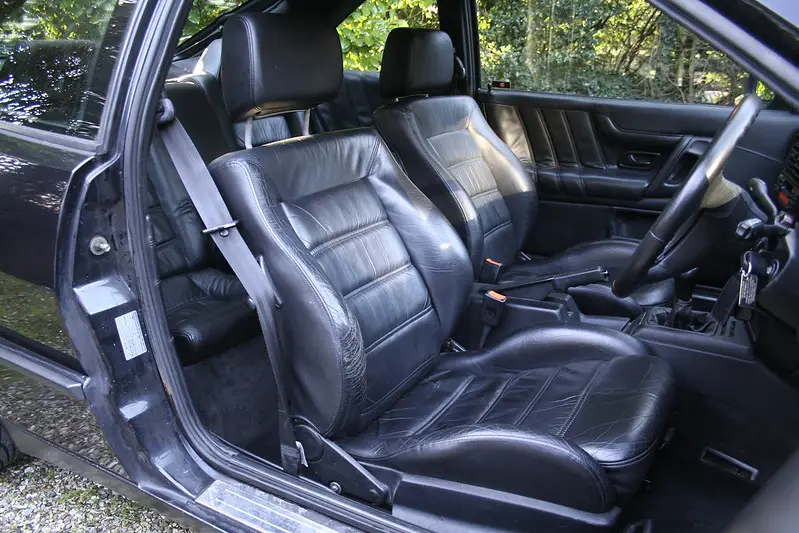
Tips19: Odor
If the car smells bad, the seller has little respect for attention to detail. It is a red flag that tells you to leave the vehicle where it is, don’t buy it. You may politely inform the seller as to why, but it will be their business to handle.
Tips20: Floor
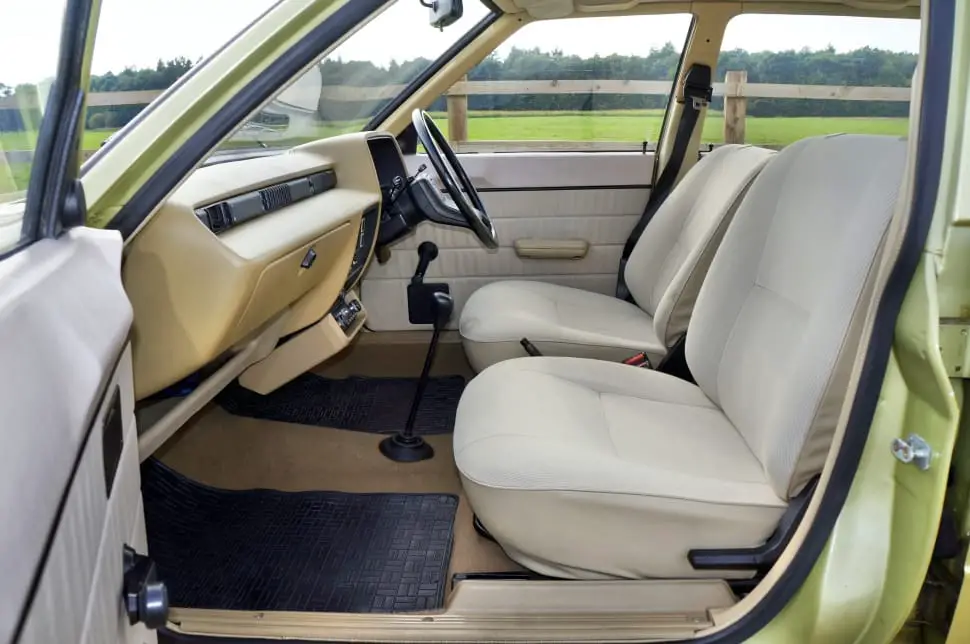
Look at the floor of the car, especially under the seats. If it is dirty or torn up, this car owner is likely rough with their vehicles. Also, it is a sign of a lack of attention to detail on these vehicles. It is another potential red flag that could end a purchase.
Tips21: Headliner
A car’s headliner is the upholstery that is along the top of the interior of the vehicle. Much like the floor, damage to this section will reveal if the operator is rough with their cars. It is another point of argument during the negotiation. It is doubly concerning if the headliner is falling out.
Tips22: Seats
You will want to check on the condition of the upholstery of the seats. Be sure to check on the underneath as well. If the car comes with power seating, which you would have found during step one, find out if these are still active and functional.
Tips23: Pedals
Check on the condition of the foot pedals. See if they have been cleaned or damaged over the lifetime of this car. Be sure to check if they feel loos or hard to press down on, which may be signs of additional car trouble. If you have a friend with technical aptitude, this is where they start to come in handy.
Tips24: Instruments and controls
Check the speedometer, odometer, and fuel gauge to be sure they are working. These instruments should all be very responsive. The most concerning measure to be off is the speedometer. The mileage should also go up at a natural weight. The only way to check the fuel gauge is by filling it up, but this is usually less necessary.
Tips25: Check the car’s mileage
It is especially important when looking up the value of the vehicle. Vehicles that have more millage will have more worn out parts, meaning that you will get less longevity out of it. If the mileage seems abnormally low, there are ways that one can tamper with it.
Tips26: Test the radio
While the least important part of your journey, a radio allows you to listen to jams while rolling along in the car. Otherwise, you can expect a dull trip once you get some use out of this. Turn it on and listen for a high amount of static to indicate damage to electrical wires or antennae.
Tips27: Check the Console
The center console is in the middle of the vehicle, which contains various controls and possible storage. It should be clean, and all of the buttons should be functional. If you are not sure about what a switch does, you can always ask. But be sure to check in on the owner’s manual because they may not even know.
Tips28: Dash
When a car starts up, typically, all of the dash lights will turn on. There are some situations where that is not the case, which you can check online or on the owner’s manual. If the car doesn’t start with lights on the dash, the seller may have tampered with the “check engine” or “oil” lights.
Tips29: Steering Wheel
Is the steering wheel hard to turn? If that is the case, there may be an issue with the power steering. During the test drive, you will probably be quickly aware of how dirty it is. In the worst-case scenario, it might be sticky to the touch.
Tips30: Gear Stick
Problems with adjusting the gear stick are often related to more significant overall issues with a vehicle. Grinding noises will indicate some sort of transmission issue. If it doesn’t behave like it’s in the right gear (neutral instead of drive), the system may be going out.
Tips31: Sound system
Another minimal issue, if you are seeking a high-quality sound system, you will know it by listening to crisp and clear audio. If you want a lot of bass noise, be sure to test it out without disturbing the neighbors. It just needs to be able to handle what you need.
Tips32: Spare wheel and accessories
A spare wheel, often a donut, should be located typically in the trunk area. If there is no trunk, there may be a hidden compartment in the back. It might come with some sort of jack or tire iron. Whatever the case, you may need to supplement one if it doesn’t come with one.
You can also refer to the following related videos to ensure that your inspection will not go wrong.
Check the Used Car Engine
This area is where bringing in that technical friend will come in handy. Checking the engine is arguably the most critical aspect of your car purchase.
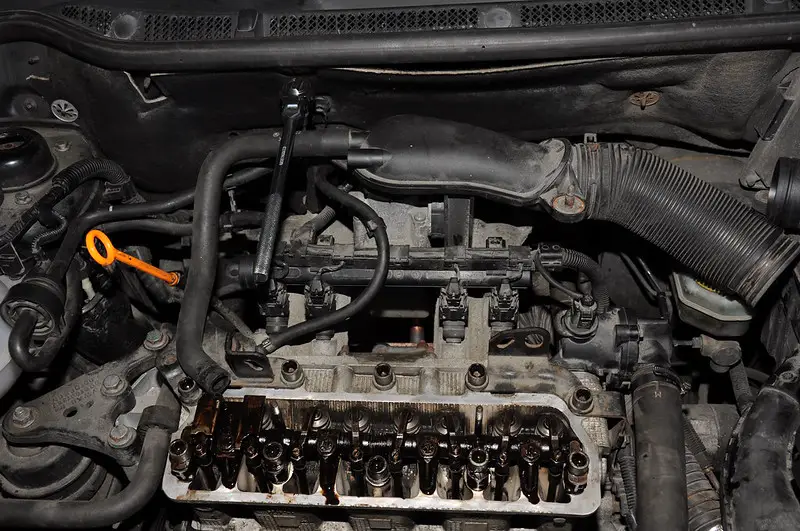
Tips33: Start with the Service History
Carfax.com is the largest organization known for pulling up accidents and vehicle service history reports. Dealerships commonly have access to these reports. Private sellers can grab them for you if they are willing or may provide you the VIN so that you may look it up. Ask about the history; if anything seems beyond routine, your online research may reveal that this car has an unfortunate history of repairs.
Tips34: Recognize the Signs of Poor Maintenance
A clear sign of poor maintenance comes from when the owner seems as if they are hiding something. A sign of this can often come with the oil, as it may be “thickened” with additives to reduce engine noise. Check the cap for oil thickness and residue. Checking your other fluids is also a good sign of a well-maintained car.
Tips35: Cold Start the Car
A cold start is attempting to start the vehicle when it is cold. If you are buying cars near the end of winter, this will come naturally. Vehicles that start poorly in the cold have signs of additional engine problems. If doing it in warmer weather, this may be impossible to accomplish.
Tips36: Check the Color of the Exhaust Fumes
The color of exhaust smoke is a sign of different potential problems in the car. Grey or blue exhaust smoke may be signs of an oil leak. Black exhaust smoke is a sign that the vehicle is going through too much fuel. If it is milky grey, a head gasket may be damaged. Heavy grey smoke may be signs of a cracked engine block. The exhaust is mostly water vapor, so it should be barely noticeable unless it is a cold day.
Tips37: Assess the Car’s Idle Noise and Feel
When you start the car, the idle noise should be pretty smooth. If you are buying an older car, this is not always the case. Let it run idle for a few minutes to see if it makes any unusual noises during this time. Your mechanically gifted friends may be able to identify common engine issues through these noises.
Tips38: Burnt oil smell under the hood
When you smell burnt oil coming from the hood, that is a sign that the car is in desperate need of an oil change. Finding this during a used car sale is a strong indication of poor attention to detail. It is a red flag that should prevent you from buying a car.
Tips39: Visible oil leaks
Visible oil leaks are another sign of the car owner’s poor attention to detail. Typically, you can find many of these oil leaks on the underside of the car. Check the area near the oil pan for an oil stain on the ground; you may also see oil stains on the bottom of the vehicle.
Tips40: Coolant and other leaks
Coolant leaks typically come from a hole in your radiator. This can be caused by something as simple as stones flying up into the car when traveling down a gravel road. Coolant may also leak out of the areas that connect your radiator to other parts of your vehicle. Check for damp spots underneath your car.
It should be said that checking the car engine is the most important part of buying a used car. You can also refer to the following video to check it.
Test drive the car
This is the moment of truth, the test drive. If you have decided that the car is worth it up to this point, this will be a crossroads in you deciding whether or not you like the car.
Tips41: Check with your, or their, insurance company
Before test-driving a car, be sure that you check with your insurance company. Many of them have an “unowned vehicles” clause that allows you to test drive or borrow someone’s vehicle. If yours does not, have the buyer check with his.
Tips42: Is it comfortable?
Before starting the car, be sure that you are comfortable in your seat. This may require a bit of adjusting, but if you cannot find the right spot, this car may not be for you. It is alright to be incredibly picky; it is a costly investment.
Tips43: Listen for engine noises?
When driving, listen to engine noises. This is where your mechanic friend comes in handy. A few significant examples include noise when turning the steering wheel, a squeaking sound when starting the car, clicking when making a turn, and consistent clunking noises. All of these noises are signs of issues that will need to be addressed.
Tips44: Look at the dash lights (e.x. check engine)
While we already mentioned it to some degree, it is doubly important to pay attention when you are driving. Lights tend to flash on when the car comes to a realization that something is wrong. Some people reset the codes before test drives as well, so you can catch someone being dishonest in this case.
Tips45: Test it for in-town and highway driving
If you have been informed that the car handled in-town and highway driving just fine, test that. If the vehicle begins the handle poorly at higher speeds, this can be concerning. You will want a car that works for what you plan on using it for.
Tips46: Check how it handles on curvy roads
Curvy roads will allow you to test its handling out. If it doesn’t glide smoothly along these roads, or at least to your expectations, this is not the car for you. You may also identify some additional engine noises in the process.
Tips47: Go uphill and downhill
Going uphill will test the car’s ability to engage its power. Going downhill allows you to check the car’s breaks. You will want to try as much driving as possible with a wide variance of streets. The more you do, the more information you have when making a decision.
Talk With Them When Buying A Used Car
Before, during, and after this whole process will involve you having numerous conversations with the seller. Pay attention to the seller during this; it may reveal some unintentional information.
Tips48: Watch how they are behaving
If the owner seems unusually jumpy or nervous, that is a sign that they may be hiding something about the car. You may politely draw attention to it because that tends to be a sign of guilt. They may just be socially awkward. Other negative symptoms to keep an eye out for include rushing you to make a decision.
Tips49: Ask them how many owners the car has had
The more owners that a car has had, the higher chance of one f those owners being terrible at car maintenance. There is also a higher chance of accidents, so compare the car history reports information with statements from the owner. It is either a sign of dishonesty or a sign they don’t know much about their car.
Tips50: Ask them why they are selling it
While this may not seem too important, the reason that they are selling it is essential information. Many responses to this question come down to making room for a new car or that their kids moved out. Defensive behavior in answer to this question may reveal that they are concealing something.
Tips51: Ask them about accident history
Honest folk will be upfront with this information, as they are aware that accidents can cause diminishing value. This is where a vehicle history report will come in handy. You can test their honesty or use it as a point to reduce the price.
Tips52: Request the VIN
If you wish to be ultimately thorough, you may request the VIN to run your own vehicle history report. Many sellers will be understanding; those who think it will hurt their chance of a sale may decline this. It is not typically an issue you run into with dealerships.
Tips53: Ask if it has passed emissions (state specific)
Some states require you to pass an emissions test before you can sell a vehicle. Be sure to check your local DMV on the selling process. If you, or they, are required to provide a passing emissions test, you will need this. This is especially important as the “check engine light” may prevent people from passing this.
Tips54: Avoid Impulse Buying
You may be eager to purchase your car and get it off of the lot right away. The first car you drive may feel shiny and new, but this does not make it the best car. Run a comparison with other vehicles in the area regardless of what you immediately think. Taking some time to think about it will be essential to ensure you aren’t buying because it is different from what you have.
Tips55: Price Negotiation
Everything up to this point has to lead you to one of the most critical aspects of buying a car: price negotiation. Every dent, ding, cosmetic issue, and piece of accident history is part of your argument to reduce the price of this car. Use public knowledge to affirm this and stick to your guns. This will be somewhat difficult in a dealership, as it is often a long-standing battle of wills.
Tips56: Don’t Purchase the Add-ons
A problem that is solely at dealerships. Many of them will attempt to sell you additional and needless features. Be sure that whatever you purchase is isolated from what you need. If it was not on your list when you walked in, you don’t need it when you walk out.
Tips57: Don’t Buy the Extended Warranty
Dealerships will also try and package an extended warranty on your car. There are a few instances where an extended warranty is actually helpful. In fact, all of them are built to find any possible reason to decline repairs. It is not like an insurance policy.
Tips58: Payment Options
Payment options need to be addressed during the early portion: your budget. If you are taking a loan, this part should have already been taken care of. You simply need to add it to your monthly budget alongside insurance. Some sellers will request cash-only deals. Always go in groups when buying privately.
Complete the Deal
So you have the car and decided this is going to be the one for you. What if you found that there was some withheld information? What are my rights as a consumer?
Tips59: Know Your Rights
The FTC regulates much of this area. The bad news is that because of the “buyers guide” telling you that you purchased the vehicle as-is, you have little rights for a full refund. Of course, you can always state the cause to a lawyer and see about small claims court, but you will still hit some significant blockades.
There are protections when it comes to warranties and implied service controls. For example, if you purchase an “engine warranty,” it is reasonable to expect the warranty handle to pay out on an engine issue.
Tips60: Don’t Forget Insurance
Finally, don’t forget one of the essential parts of your new car purchase: insurance. Many policies come with an initial one week to one month period where you can drive a newly acquired vehicle without adding it. This can be useful for test drive periods. Call your insurance company for details, and be sure to get it added as soon as possible.
Conclusion
Based on this list, it is clear that there is a lot to consider when purchasing a used car. You have to budget and get your prep work done, inspect the car top-to-bottom, test drive the vehicle, and ensure that you have your finances in order. Overall, it can be an incredibly complicated process.
With the guide listed above, we have gone through everything you are bound to run into when making a purchase. As always, be sure to scrutinize all of the details on the car. This will ensure that when you make that new car purchase, you will be happy with your long-term investment.
Related Posts

